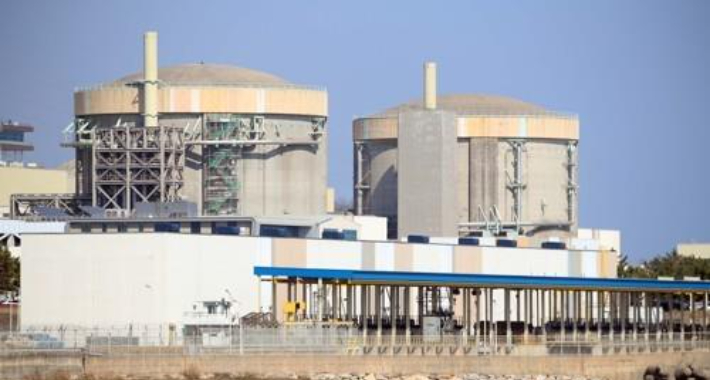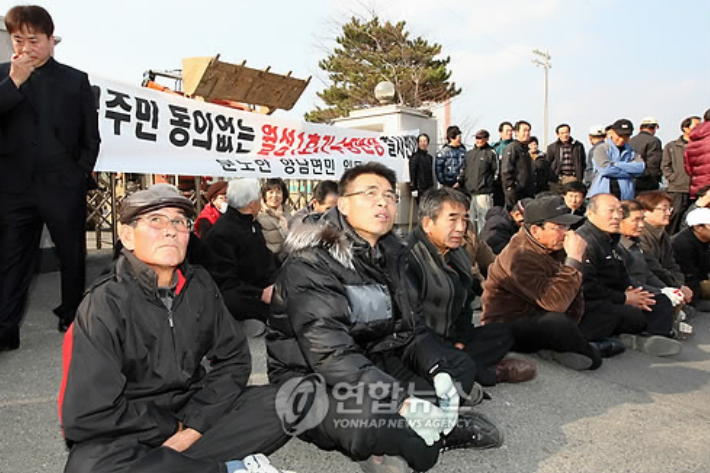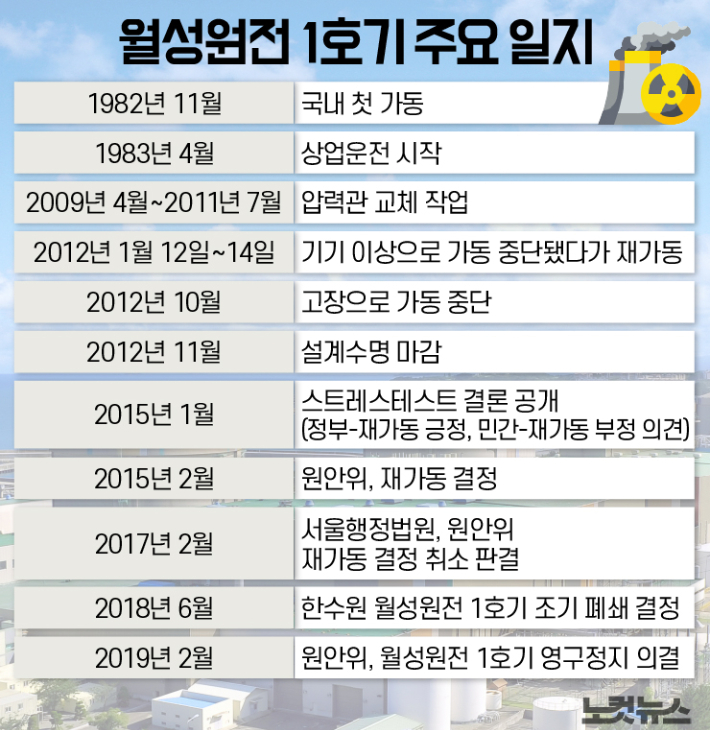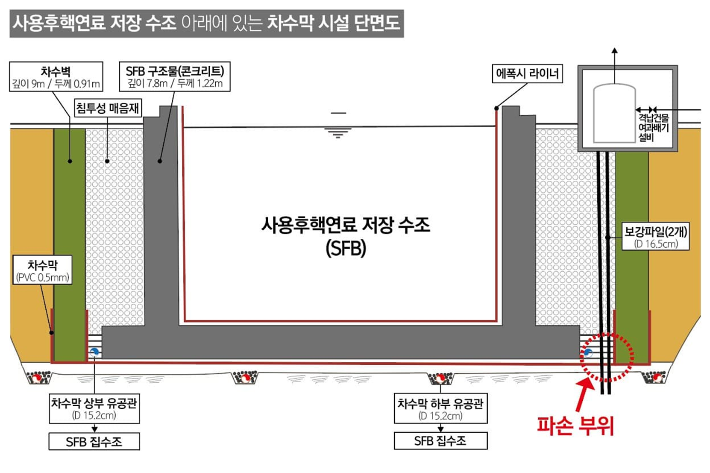Then President Lee Myung-bak visited the Yeonggwang Nuclear Power Plant in Jeollanam-do in December 2009 and is looking at the spent fuel storage. yunhap news-Amid controversy amid controversy over the detection of tritium, a radioactive material, in the groundwater of the Wolseong nuclear power plant site in Gyeongju, Gyeongsangbuk-do, claims that the first Wolseong nuclear power plant was renovated during the Lee Myung-bak administration were raised online.
According to the social network service (SNS) and online community on the 10th, Wolseong Nuclear Power Plant 1 received a 10-year life extension permit from the Nuclear Safety Commission in 2015 after renovating and renovating it for two years at 700 billion won for two years. Is spreading.
At the same time, concerns over damage to tritium detection are also followed. Is this really true?
It is true to start with the conclusion. Wolseong Nuclear Power Plant Unit 1, which first began operation on November 21, 1982, was scheduled to be shut down in 2012, with a design life of 30 years.

Wolseong nuclear power plant. yunhap news-The Ministry of Education, Science and Technology held the Nuclear Safety Committee in December 2008 to deliberate and decide on a plan to replace all pressure pipes for Wolsong Unit 1, and then in April 2009, all 380 pressure pipes for the heavy water reactor at Wolseong Nuclear Power Plant Unit 1 will be replaced. The pressure tube is a heavy water reactor where nuclear fuel is loaded, fission occurs and coolant flows, and is a core facility of a nuclear power plant.
NGOs protested this as a trick to increase the life of the nuclear power plant, but it repeatedly explained that it was necessary to replace the pressure pipe in the safety evaluation, not in the sleep extension of Korea Hydro & Nuclear Power (KHNP). On December 30 of that year, KHNP suddenly applied for sleep extension at Wolseong Nuclear Power Plant.
At that time, the government’s stance was to increase the proportion of nuclear power plants. In August 2008, the National Energy Commission held a third meeting presided over by President Lee Myung-bak to deliberate and finalize the ‘1st National Energy Basic Plan’, which establishes 20 years as the planning period every 5 years.
The Lee Myung-bak administration announced a plan to raise the share of nuclear power generation from 36% to 59% by 2030, which was labeled as having entered the era of the’nuclear power renaissance’.

In December 2009, in front of the school gate of Nasan Elementary School in Yangnam-myeon, Gyeongju-si, Gyeongsangbuk-do, local residents objected to the application to extend the lifespan of Wolseong Nuclear Power Plant 1. yunhap news-In a call with CBS Norcut News on the 11th, Lee Sang-hong, secretary general of the Gyeongju Environment Association, said, “At the time in 2009, the pressure pipe of the Wolseong nuclear power plant was deteriorated, so it was a uniform point to close the nuclear power plant or replace the pressure pipe.” The replacement work was in progress and it was restarted in July 2011. However, it broke down and stopped operation on October 29, 2012, one month before the end of its lifespan. In February 2015, the nuclear safety committee granted conditional approval, and the sleep extension was finally allowed. “He said.
In fact, according to the’Wolsong Unit 1 Continuous Operation Permit (draft)’ by the Korean National Security Agency, the design life of the Wolseong Nuclear Power Plant Unit 1, whose design life expired on November 20, 2012, is suitable for continuous operation for 10 years until November 20, 2022. It restarts. At that time, in the evaluation of the restarting safety of nuclear power plants, the government gave a positive opinion and a private verification team gave a negative opinion.
After that, the civil society side filed a lawsuit against the decision to extend the sleep of Wolseong Unit 1 in May 2015. In February 2017, the Seoul Administrative Court decided that the safety evaluation of Wolsong Unit 1 had not been properly conducted, and ruled to cancel the decision of the original security committee.
KHNP decided to close the Wolsong 1 unit early in June 2018, and on February 28, 2019, KHNP applied for the permanent suspension of the Wolsong nuclear power plant unit 1, and decided to approve KHNP’s operation change permit.

Graphic = Reporter Go Gyeong-min-Then, what is the controversy over the detection of radioactive substances at Wolseong Nuclear Power Plant Unit 1?
Strictly speaking, the controversial tritium was detected in’inside the site of the nuclear power plant’ rather than’outside the site of the nuclear power plant’. KHNP’s side explains that if the nuclear power plant is operated, tritium can be detected within the site. KHNP also firmly denied the outflow.
According to data obtained by the Gyeongju Environmental Movement Association, up to 397,700 becquerels (Bq) of tritium were detected per liter of groundwater under the water screen of the’Spent Nuclear Fuel Storage Tank (SFB)’ of Wolseong Unit 1. In Unit 2, 26,700 becquerels and 8610 becquerels were detected in Unit 3, and it was found that there was no groundwater inflow in Unit 4.
On the controversy date, Professor Sung-min Choi of the Department of Nuclear and Quantum Engineering at KAIST said on Facebook, “When the radioactivity in coffee powder is converted to tritium, the tritium leaked from the Wolseong nuclear power plant is at a much lower level than the radioactivity in coffee powder at 300,000 becquerels per kg.” Refuted.
Professor Jeong Yong-hoon of KAIST’s Department of Nuclear and Quantum Engineering also said, “It is natural that the Wolseong nuclear power plant generates a lot of tritium, that the Wolseong nuclear power plant has a higher tritium concentration than the surrounding villages, and that there may be places inside the nuclear power plant higher than the boundary.” I drew a line.

Providing joint action for post-nuclear race citizens and joint action for post-nuclear Ulsan citizens-In addition, in the process of installing the containment filter and exhaust system (CFVS) in 2012 in order to increase the safety of the Wolseong Nuclear Power Plant No. 1 nuclear power plant, it is also a problem that the water barrier was damaged. When the spent fuel storage tank is damaged, the water shield is a secondary barrier that prevents radioactive materials from leaking to the outside.
KHNP, who recognized this problem only in 2018, six years later, announced that it plans to repair the water curtain and reinforce the water barrier by the end of June 2021.
“If you look at KHNP’s report, tritium is being detected at the boundary of the Wolseong nuclear power plant site,” said Yong Seok-rok, head of the post-nuclear Ulsan Citizens’ Joint Action. “The reason for the detection is whether the SFB cracked or where the problem occurred. It is not possible, so experts and related organizations are notifying that it is necessary to form an investigation committee.”
Chairman Yong pointed out, “In the case of Gyeongju and Ulsan, tritium was found in the urine of the residents of Yangnam-myeon, as well as the area affected by the Wolseong nuclear power plant. The detection of tritium is a sensitive part because it is directly connected to the right to health and the right to live.”
He emphasized, “If there is a leak of radioactive material through accurate investigation, it is necessary to take action. If there is no problem, if it is revealed as there is no problem, can we be relieved? We have nothing to do with political issues, and we have no interest.”
Along with this, he added, “There is natural radiation, which is radiation that exists in nature, and artificial radiation created by humans,” he added. “I hope that residents around nuclear power plants are receiving artificial radiation plus natural radiation.”
–
![[노컷체크]’Tritium detection’ Wolseong nuclear power plant 1, extension after construction at MB? [노컷체크]’Tritium detection’ Wolseong nuclear power plant 1, extension after construction at MB?](https://file2.nocutnews.co.kr/newsroom/image/2021/01/12/202101121054537582_0.jpg)

